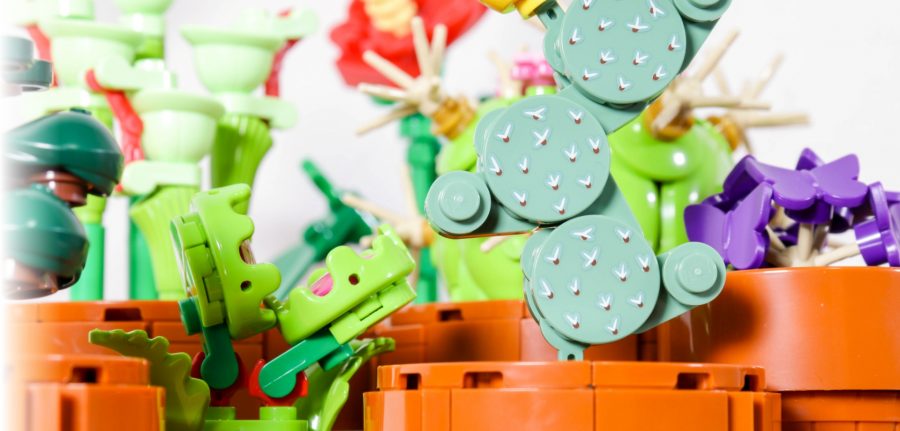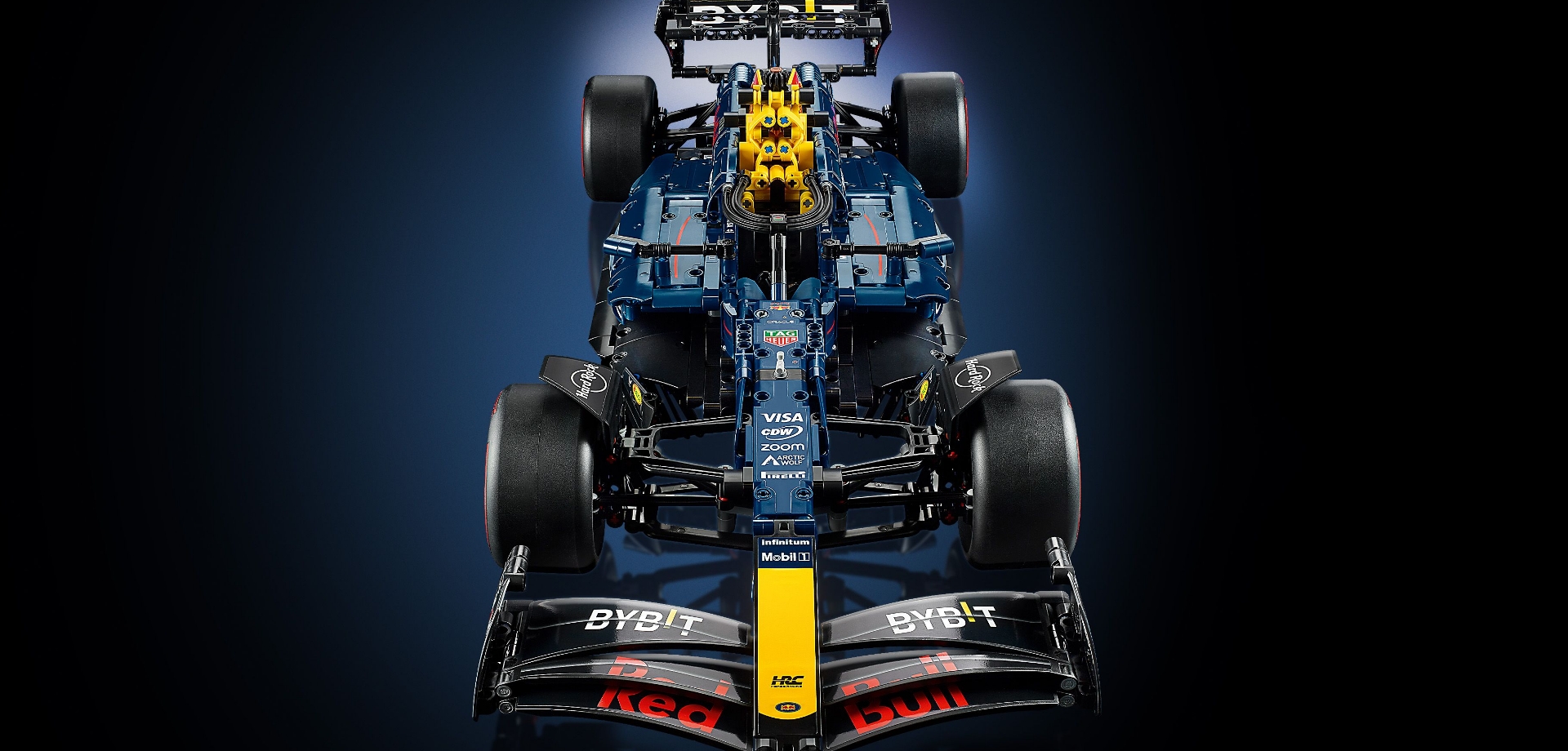
A bunch of small botanical plants you can’t kill
Review: LEGO Botanical Collection Tiny Plants – We’ve all been there. You’ll buy those tiny small plants from places like ALDI or IKEA just before you leave the store. You mention that it’s small, it’s a cactus, you can’t surely kill it right? Well, do I have a more enticing offer for you, the Tiny Plants collection!
LEGO have just announced these sets coming to our shelves soon, but are they worth the pricetag? Or is it somehow better to continue the cycle of small plant deaths? Read on!
- LEGO® Botanical Collection Tiny Plants (10329)
-
RRP AUD $99.99 – CA $69.99 – EUR €49.99 – UK £44.99 – USA $49.99
-
758 pieces
-
Available from LEGO.com and LEGO Stores from 1st December 2023.
The Tiny Plants botanical collection prides itself on three distinct types of plants. Arid, Carnivorous and Tropical. Each of these types has a small, medium and a large sized pot that they come in as well.
Arid Plants
Britton’s Liveforever (Dudleya Brittonii)
This particular plant is probably one of the least interesting ones from the collection, but still a neat little plant.
It uses some common plant elements and lavender tooth pieces to pull off a simple but quaint look.
Now in all honesty, if I was going to make my own plant for the collection, this one would go first. It’s just a bit too… simple.
To sit inside of, the pot plant that this plant and two others come in are made up of dark orange technic engine pieces common in Star Wars ship thrusters. As well as some classic Medieval Market barrels.
Eastern Prickly Pear (Opuntia Humifusa)
The only plant in this list to use printing.
Prickly Pear is very much what-you-see-is-what-you-get. It’s accurate, simple, and quaint.
This pot design is a bit more ‘classic’, utilising standard SNOT techniques to pull off the rounded shape.
Pincushion Cactus (Mammilaria Crinita f. Zeilmanniana)
Pincushion Cactus is the largest cactus we get in this set, as well being the second largest Botanical-range cactus overall.
It utilises some of the 4×4 rounded plate elements introduced in Vidiyo to help pull off the rounded shape.
Although the golden elements are a bit jarring, in my opinion, the overall look fits well. I’m a big fan of the new recoloured plant elements used for the spines here too.
It’s also worth talking about the pot itself. It uses a cunning technique with 1×4 rounded topped bricks and precarious angles to pull the sloped shape together.
Carnivorous Plants
Venus Flytrap (Dionaea Muscipula)
Venus Flytrap is probably my favourite out of this bunch.
It’s use of cake moulds and those Rivendell plant elements work together perfectly.
Red Sundew (Drosera Brevifolia)
This particular plant is probably the only plant I really had to do a few double-takes on to suss out what it was.
Red Sundew isn’t a plant that would translate easily to LEGO at any scale, and it is a bit lost in the mix with this rendition.
Now, don’t get me wrong. I love the plant brush elements and should pads used to pull this off. It’s probably the most faithful recreation of the plant that I could imagine too.
I’m just not sure if it was better off supplemented with something else.
Yellow Pitcher Plant (Sarracenia Flava)
Onto my second-favourite plant, this Pitcher Plant is simply fun. Seeing the use of broom ends, pith helmets and all the elements coming together to make this makes me smile.
Love this.
Tropical Plants
False Shamrock (Oxalis Triangularis)
LEGO Designer’s choice to use purple butterfly elements to recreate the False Shamrock look is simply a genius move in my opinion.
I do wish that it was a little more ‘fuller’ with maybe a few more butterflies somewhere to cover up the underbelly of the build a bit more. Ah well.
Jade Plant (Crassula Ovata)
Instantly recognising the CMF Newspaper boy hats here, the Jade Plant decides to lean in a bit on ‘flexing’ the nice-parts-usage.
It works for the intended purpose, but I do wonder if the brown is too dark of a choice for likeness to the real plant.
Laceleaf (Anthurium Andraenum)
Laceleaf is the only plant of the set that incorporates any height. Allowing it to easily tower over the other builds of the set.
If you look too closely, the build definitely seems ‘mechanical’, inadvertently due to the hilt elements making up the stalk.
A faithful recreation of the plant in question, albeit a bit clunky.
Verdict
Overall, these sets are very simple but effective little builds.
There are some nice part usages in a few of the builds, as well as some fun recolours, but ultimately what makes up most of this set is the pots themselves.
It’s a lot of part bulk for the effect, and that’s just part of the deal. It isn’t a detriment to the designers as you can’t really get around this, but you can see what you’re paying for.
I know that with this set that not all the plants ‘wow’ me enough to keep it 100% as is, and I will likely modify it with my own plants.
To reiterate, it’s not a bad set by any means, but most of the cost comes from the pots.
If you’re happy with that, go for it! If you don’t like the pots and were going to colour swap them or something similar, best to reassure yourself.
Thank you for reading
Support BrickBanter.com by shopping for your LEGO® via the affiliate links below.
It’ll cost you nothing but will mean the world to us. 🫶
🇦🇺 Australia – 🇨🇦 Canada – 🇪🇺 Europe – 🇬🇧 United Kingdom – 🇺🇸 United States – 💛 Everyone else
Explore more articles

BrickBanter.com is a recognized LEGO® Fan Media account.
Review sets are supplied by the LEGO group.































